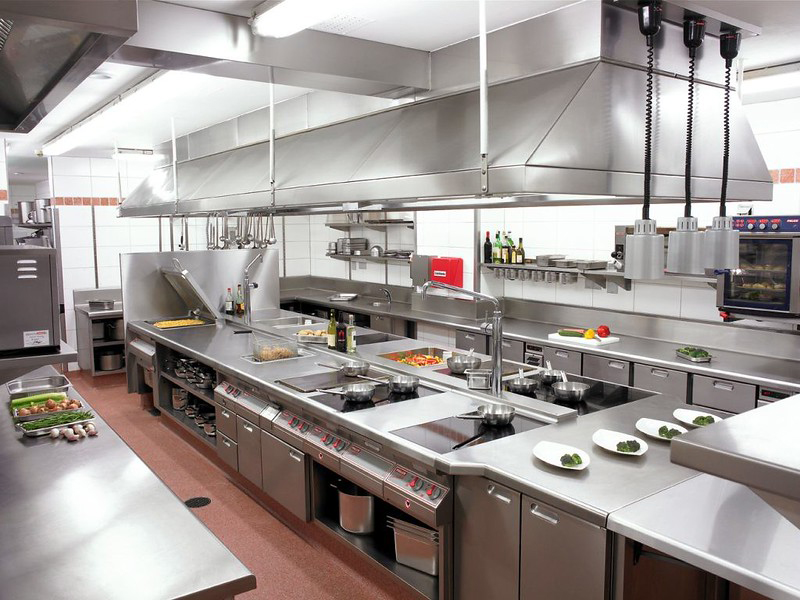

When designing the layout of a commercial kitchen, certain variables, including flexibility, employee mobility, health and safety regulations, equipment location, ergonomics and energy efficiency, must be taken into account. Indeed, a cutting-edge kitchen can be only be realized after the spectrum of operations have been understood.
Flexibility and space efficiency are extremely important. The kitchen should be as versatile as the restaurant’s menu dictates. A modular kitchen allows for better usage of space, including any mobile or multipurpose workstations, as well as other pieces of equipment.
Even though equipment for a hotel’s main kitchen often comes as standard, circulation and kitchen access have to be carefully checked, especially the goods receiving that must be linked to the loading dock, and room service that must be directly linked to the corridors and service lifts.
Wash stations
One of the biggest mistakes in kitchen design is not having enough wash stations. One must consider the amount of cutlery, dishes, glasses and trays that will accumulate on the restaurant’s busiest day, as well as the capacity of dishwashers, when calculating the size of drain boards, racks and landing tables.
Health and safety
Restaurant health and safety should be prioritized in every part of the kitchen. The cooking and prep spaces may be the most fun aspect of kitchen design, but cleaning stations are equally significant. It is crucial to have a dedicated area for dirty dishes, and clean dishes need to be conveniently located for easy plating.
Refrigerators
The smooth operation of a commercial kitchen can be impacted by inadequate refrigerator space. If you have too much storage, you’ll either have refrigerators that are half full, costing you more to run, or you’ll have extra refrigerators that are worthless and take up space.
Ventilation
When designing a kitchen, it’s necessary to take the air ventilation system into account. Inadequate ventilation can reduce the quality of the air indoors, resulting in bad odors and insufficient airflow. Furthermore, poor ventilation can put workers at risk.
Waste disposal
An insufficient area for trash and recycling placed far from the cooking and serving stations can prove to be a major design flaw. Garbage disposal stations must be within close proximity to cooking areas. Effective garbage disposal helps to maintain hygiene eliminate foul odor. Furthermore, the sorting of garbage can lead to greater efficiency and reduced costs.

Georges Haddad,
Owner
Luminescenza













